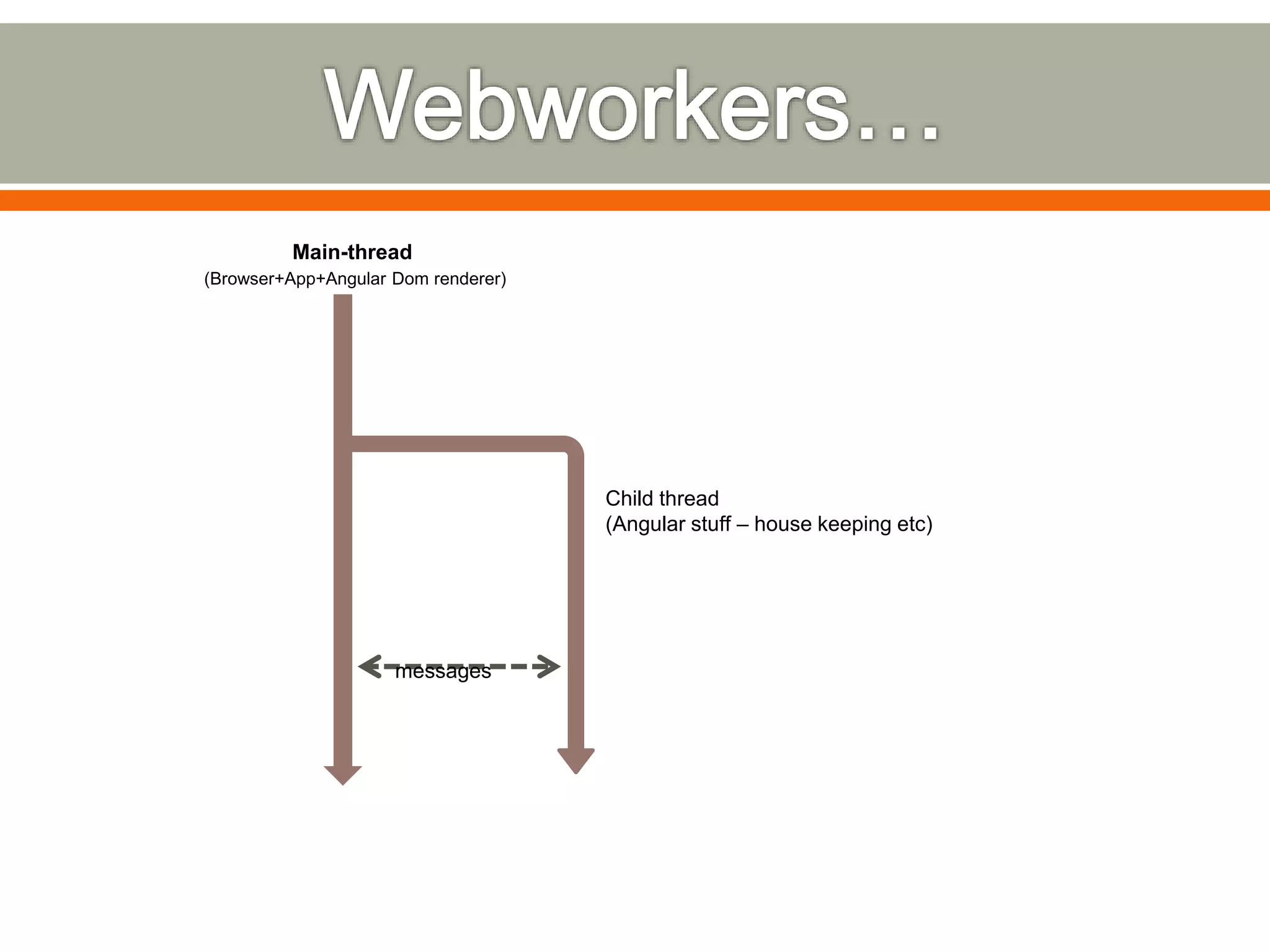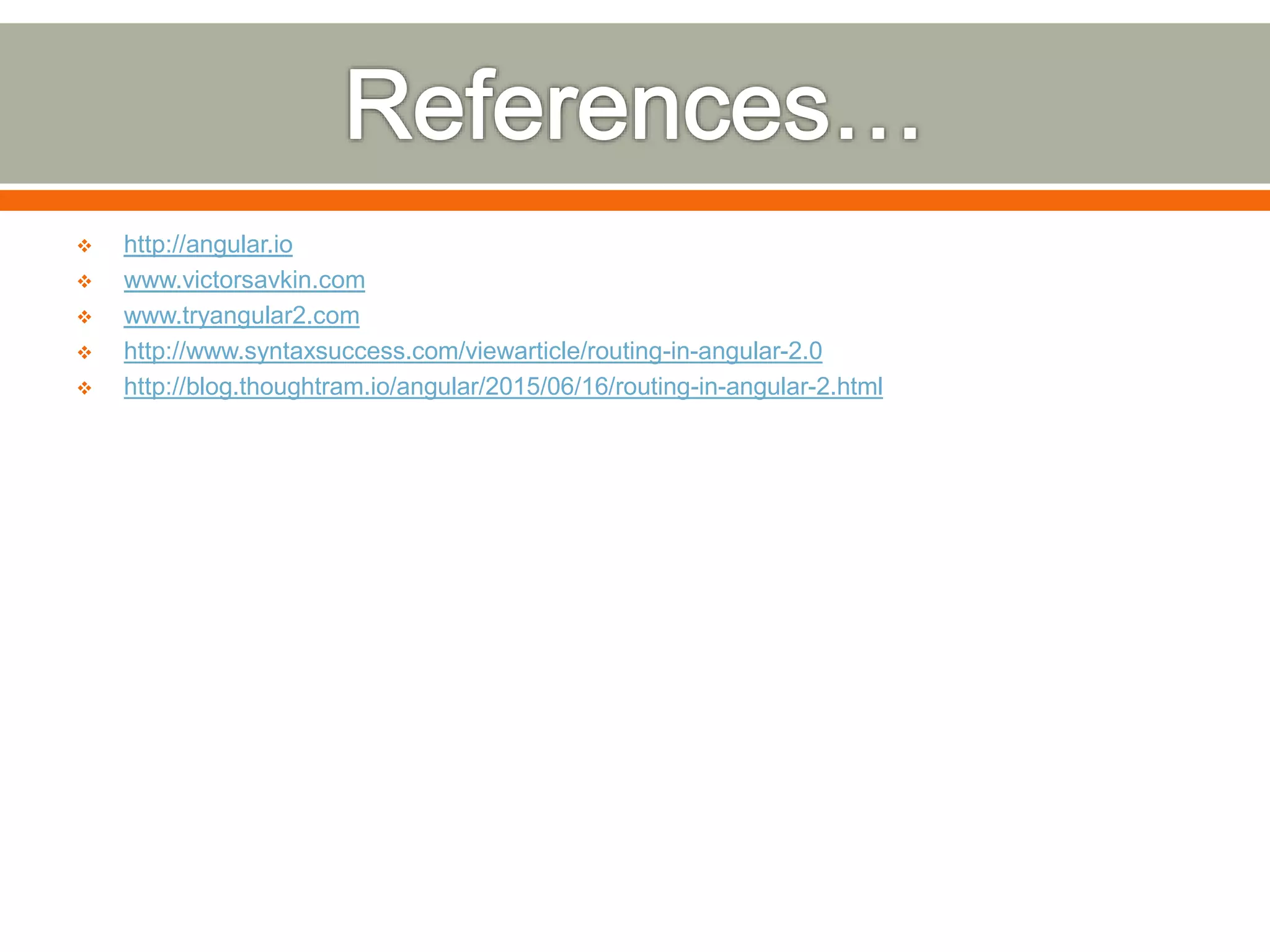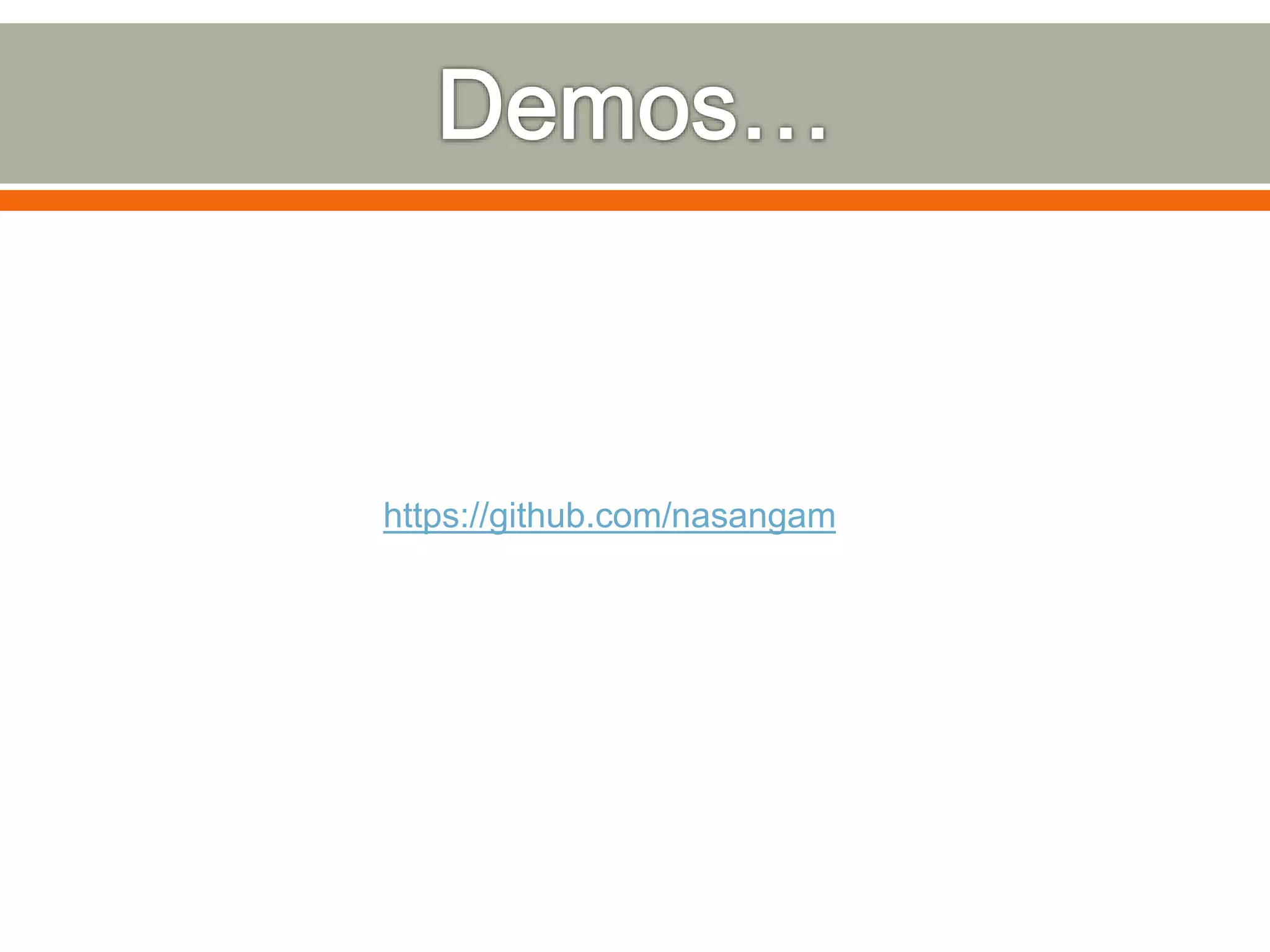This document provides an overview of key differences between AngularJS 1.x and Angular 2.0. It discusses changes to change detection, routing, services, directives, transpilation to ES5, and dependency injection. Transpilation of Angular 2 code from ES6 to ES5 for browser compatibility is recommended using tools like Babel. Components, services, and directives are defined differently in Angular 2 compared to 1.x. Routing is now done at the component level rather than using routes.
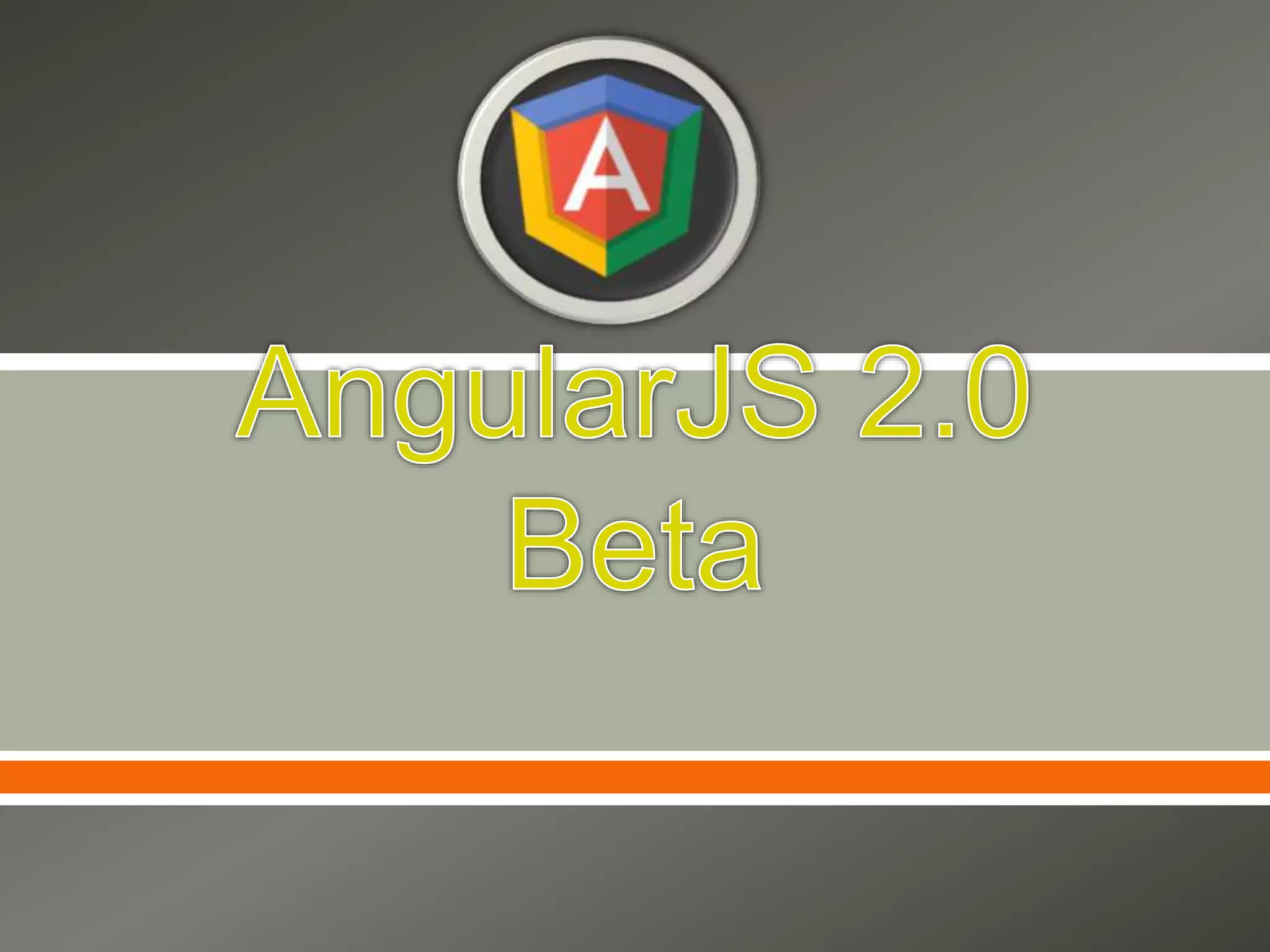

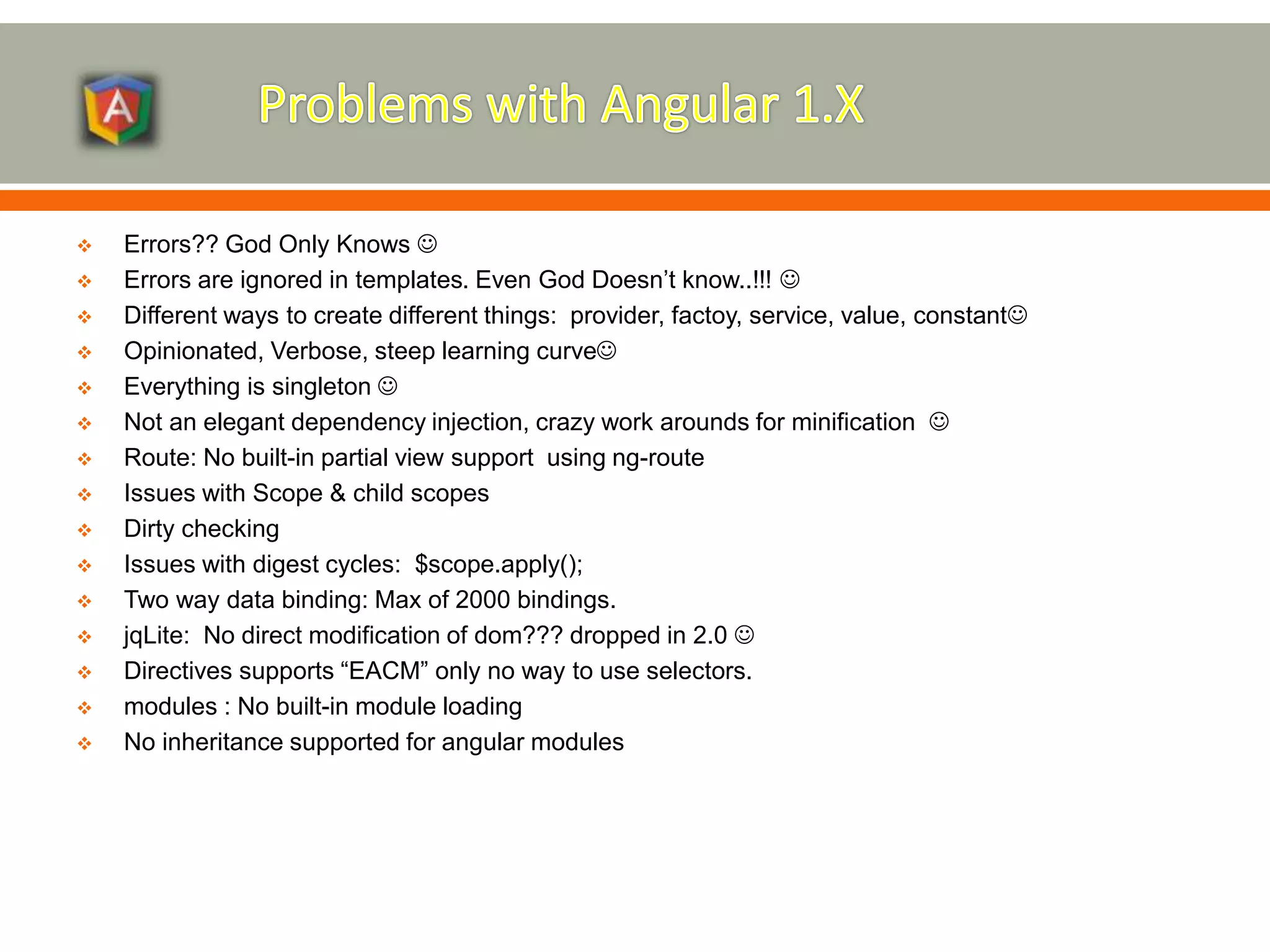

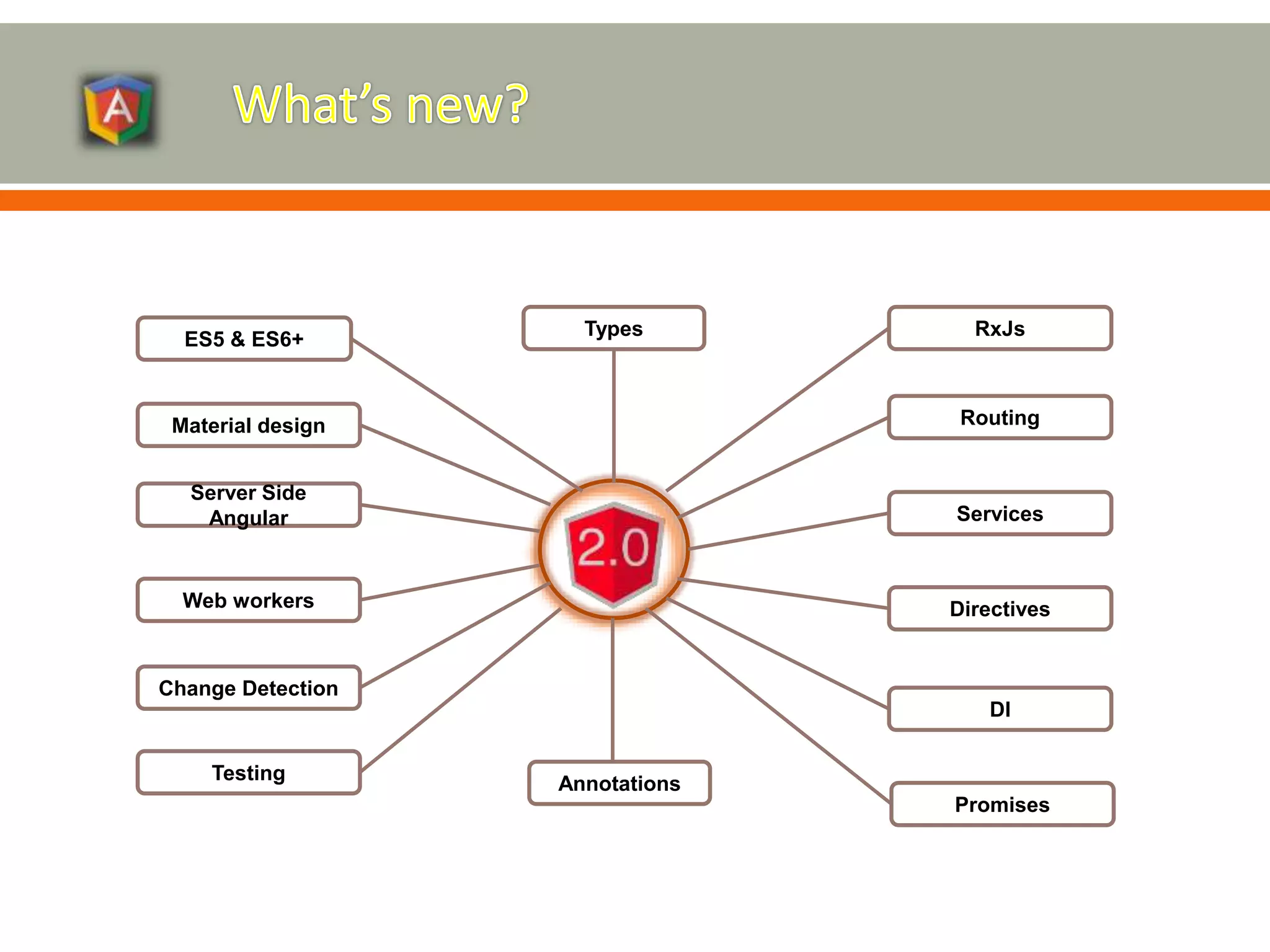
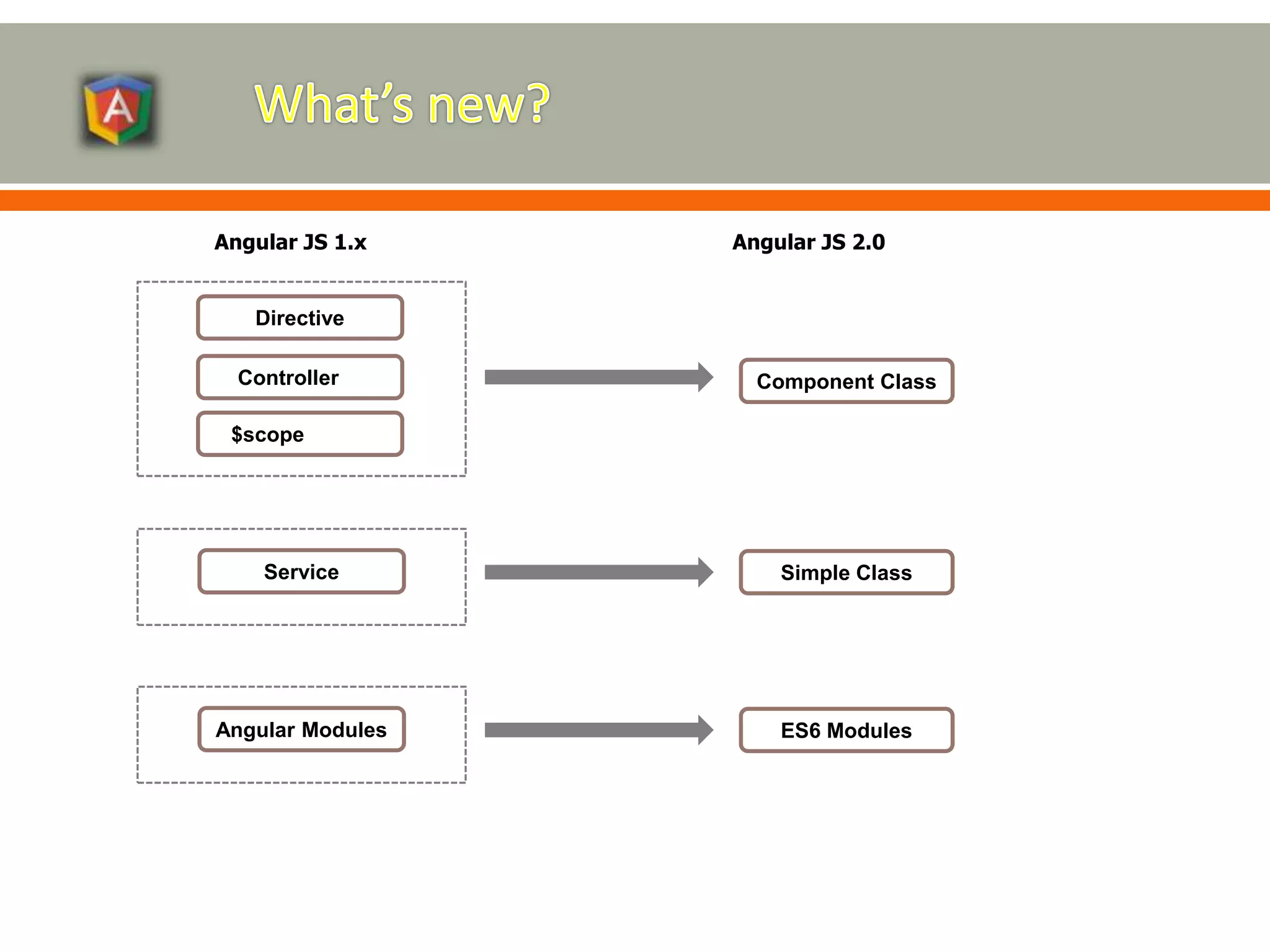
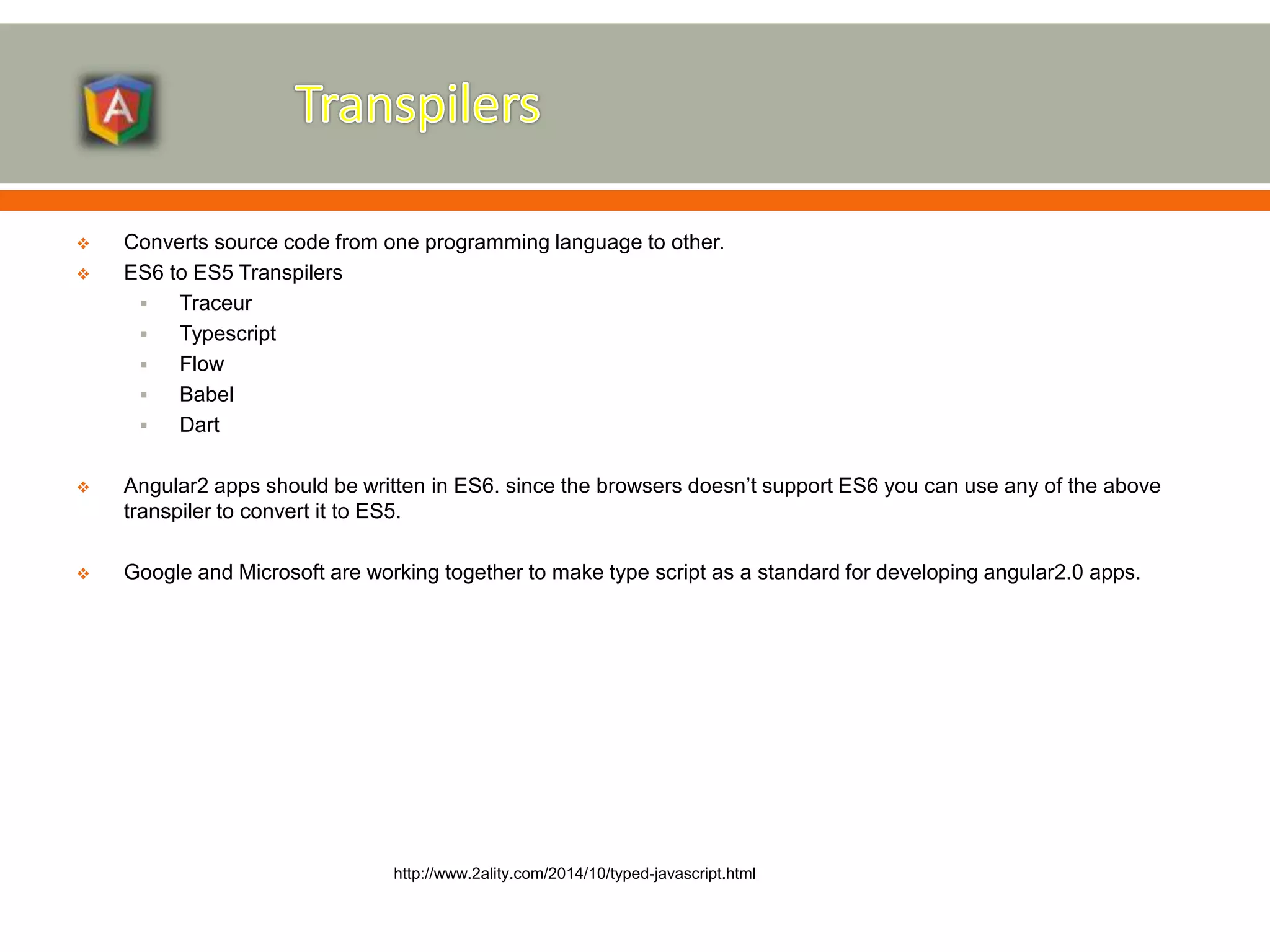
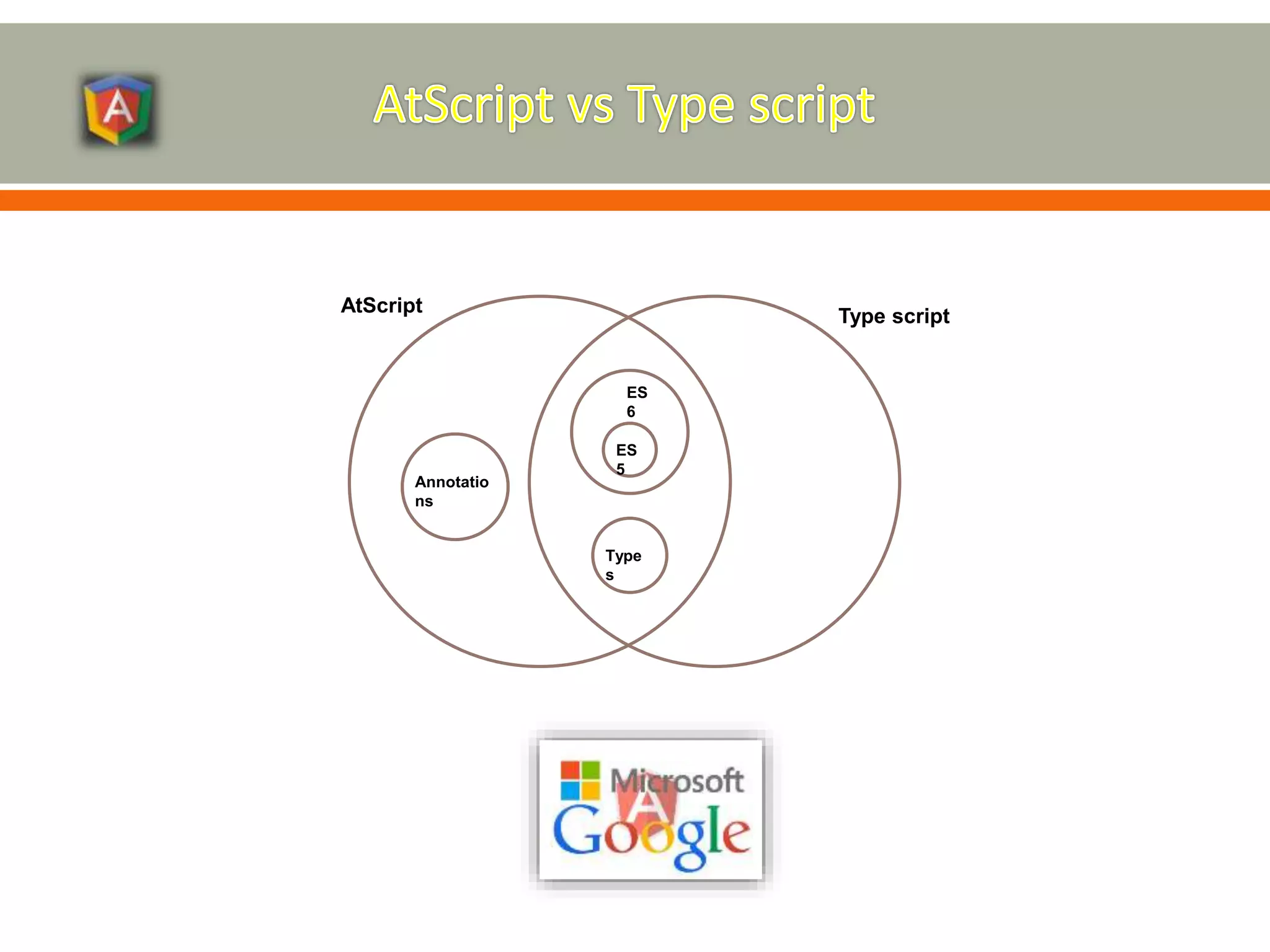
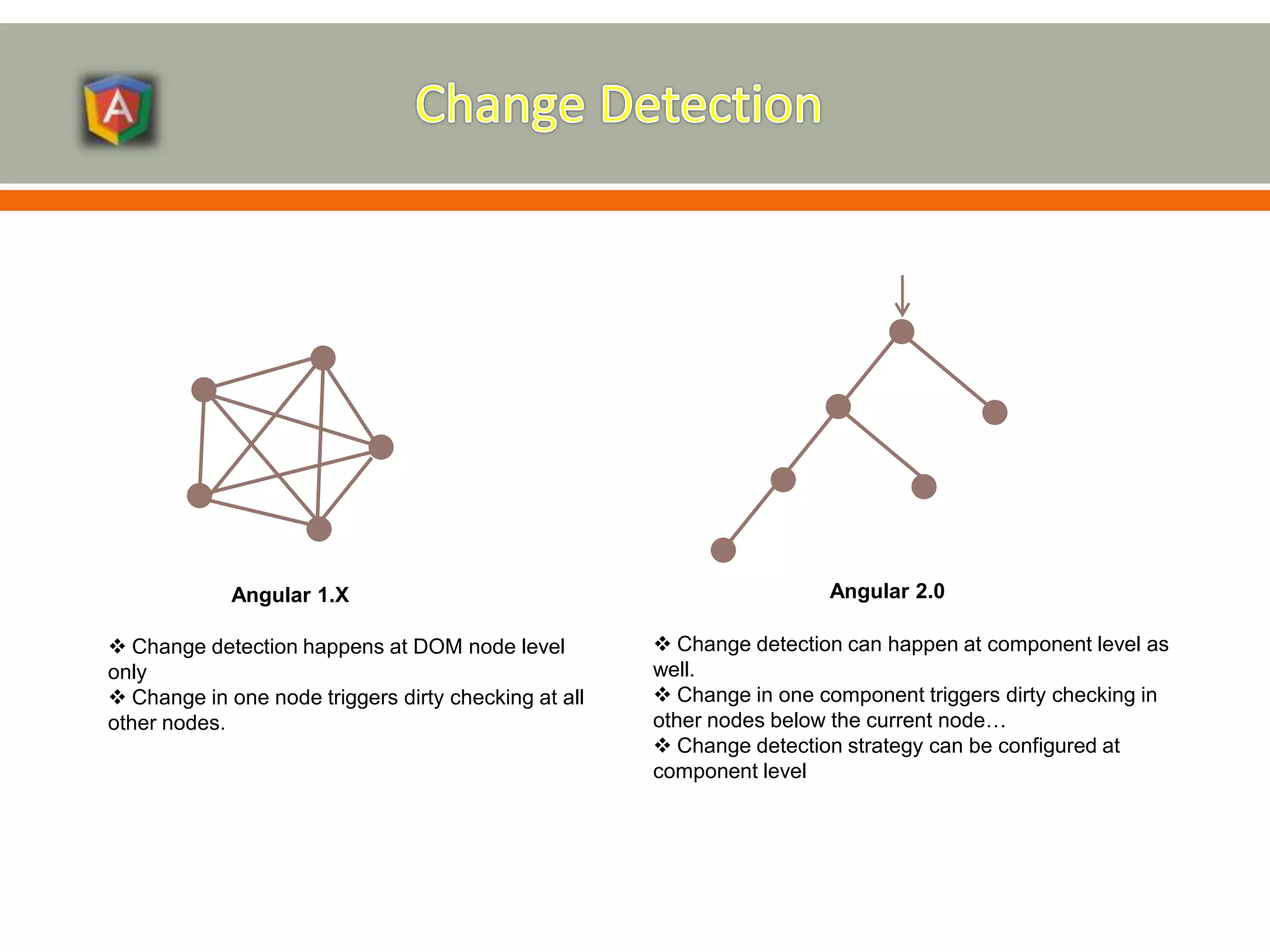
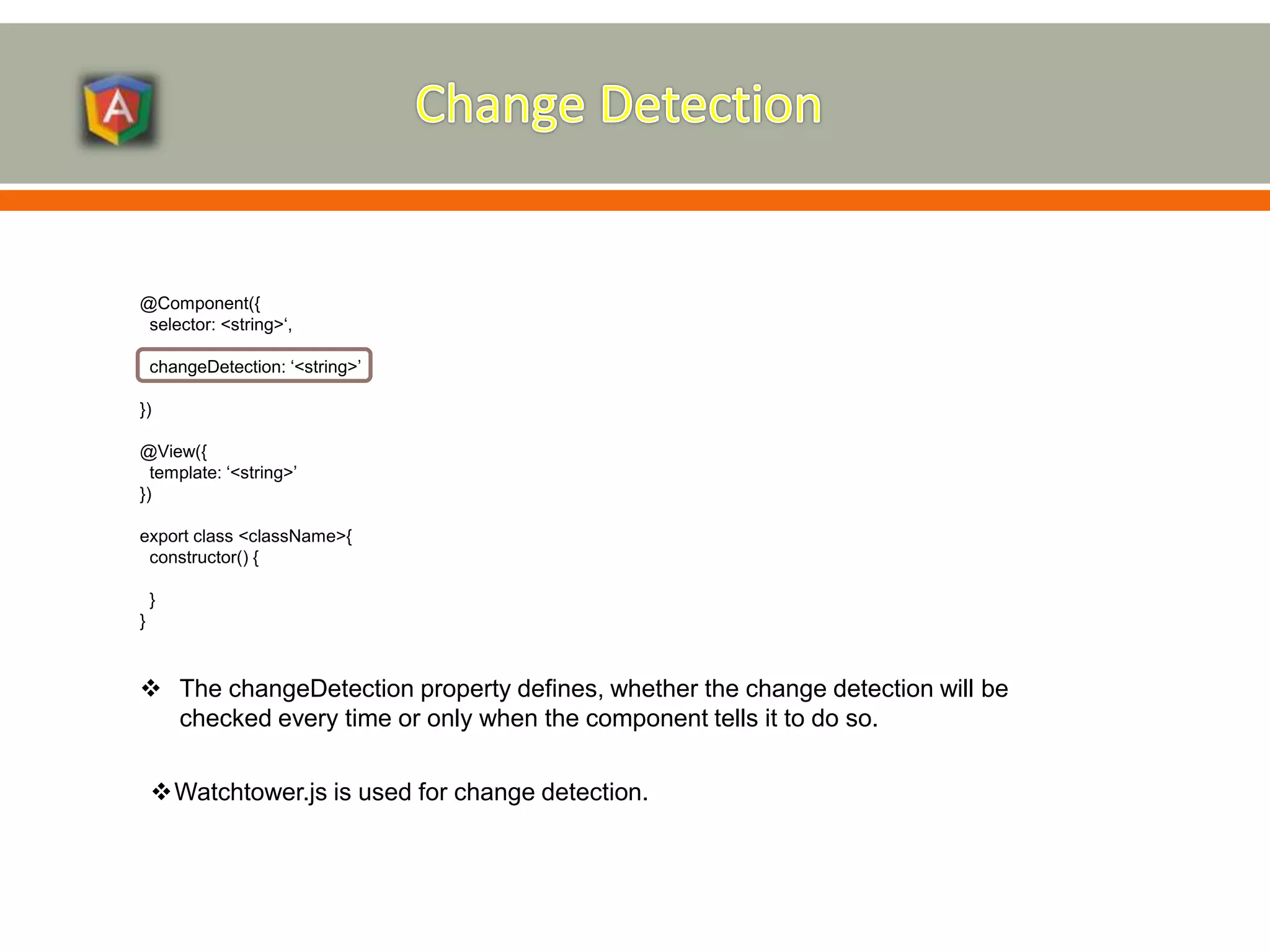
![ Angular 2.0 doesn’t have two-way data binding like 1.x two-way data binding can be achieved with the combination of event & property bindings: <input type='text' [value]=‘ename' (keyup)=‘ename=$event.target.value' /> In short : <input type='text' [value]=‘ename' (keyup)=‘ename=$event.target.value' />](https://image.slidesharecdn.com/angularjs2-160112110012/75/Angular-js-2-0-beta-11-2048.jpg)
![ Routing happens at component level, for each different route different component can be loaded into RouterOutlet directive, it is similar to ui-view in angular 1.X. @RouteConfig([ { path: '/', redirectTo: '/sponsers' }, { path: '/sponsers', component: Sponsers, as: 'sponsers'}, //sponsers & attendees are components { path: '/attendees', component: Attendees, as: 'attendees'} ]) <router-outlet></router-outlet> Router-Link is similar to hg-href in 1.X. <a [router-link]="['/attendees']" router-params="">attendees</a> JSON based route config 404 support QueryString support Lyfecycle events routeResolver](https://image.slidesharecdn.com/angularjs2-160112110012/75/Angular-js-2-0-beta-12-2048.jpg)
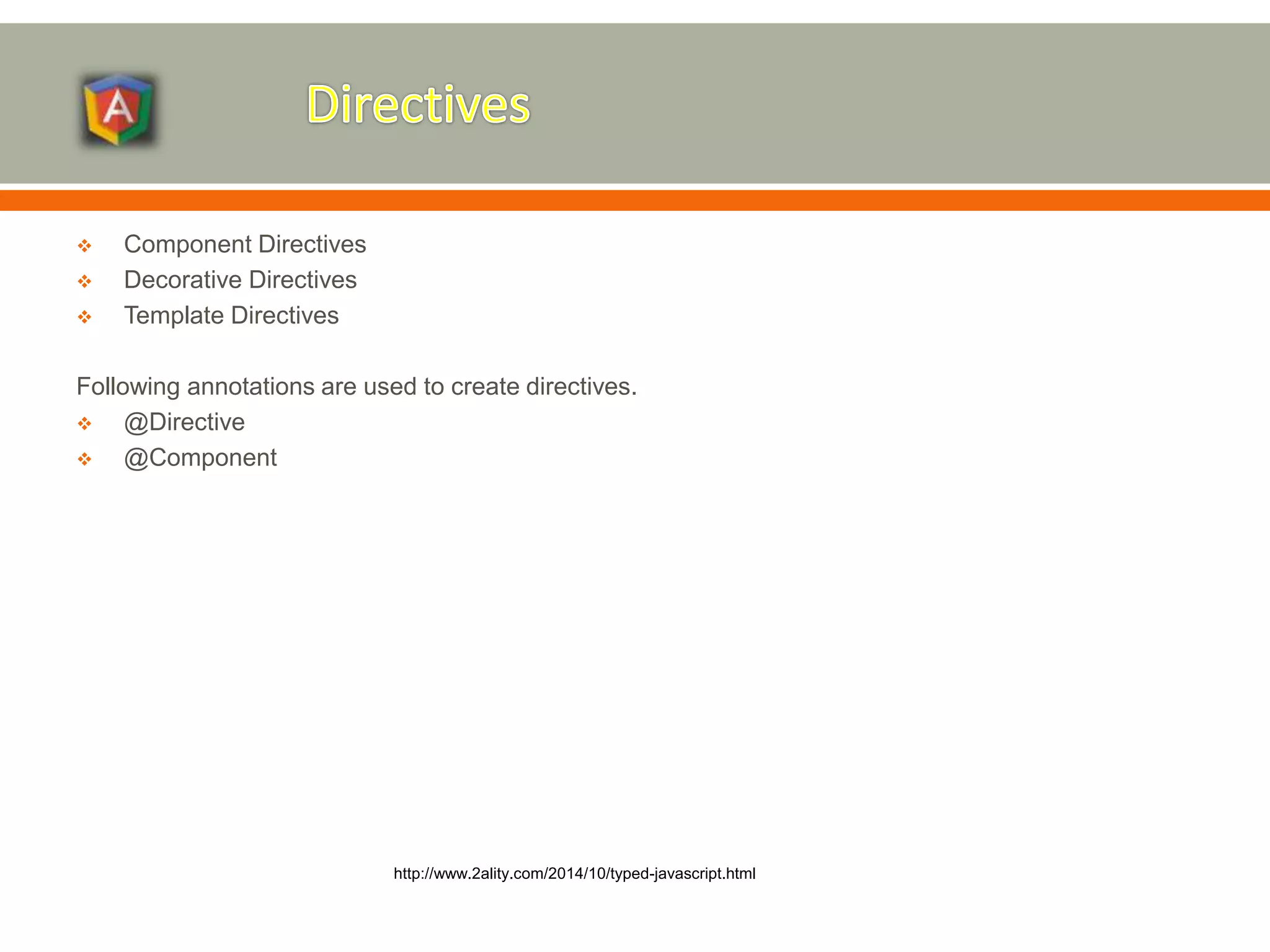
![Service is a simple ES6 class in Angular2, these services should be injected into components via Dependency Injection. Sponsers-Service.ts export class SponsersService{ constructor() { } getData(){ return ['cisco','intel','flipkart']; } } http://www.2ality.com/2014/10/typed-javascript.html](https://image.slidesharecdn.com/angularjs2-160112110012/75/Angular-js-2-0-beta-14-2048.jpg)
![http://www.2ality.com/2014/10/typed-javascript.html Http is available as a separate module in alpha 35: https://code.angularjs.org/2.0.0-alpha.35 Eg: import {Http, httpInjectables} from 'angular2/http'; @Component({selector: 'http-app', viewBindings: [httpInjectables]}) @View({templateUrl: 'people.html'}) class PeopleComponent { constructor(http: Http) { http.get('people.json') .toRx() .map(res => res.json()) .subscribe(people => this.people = people); } }](https://image.slidesharecdn.com/angularjs2-160112110012/75/Angular-js-2-0-beta-15-2048.jpg)
![ Dependencies can be specifies as parameters: eg: function(@Inject(<svcName>) s) Component dependencies should be listed in bindings property of @Component annotation. Template dependencies should be listed in directives property of @View annotation. http://www.2ality.com/2014/10/typed-javascript.html import {Component, View, Injector} from 'angular2/angular2'; import { NgFor } from 'angular2/angular2'; import {SponsersService} from 'services/sponsers-service'; @Component({ selector: 'sponsers', bindings:[SponsersService] }) @View({ template: '<ul><li *ng-for="#item of data">{{item}}</li></ul>', directives:[NgFor] }) export class Sponsers { data; constructor(@Inject(SponsersService) s) { this.data = s.getData(); } }](https://image.slidesharecdn.com/angularjs2-160112110012/75/Angular-js-2-0-beta-16-2048.jpg)
